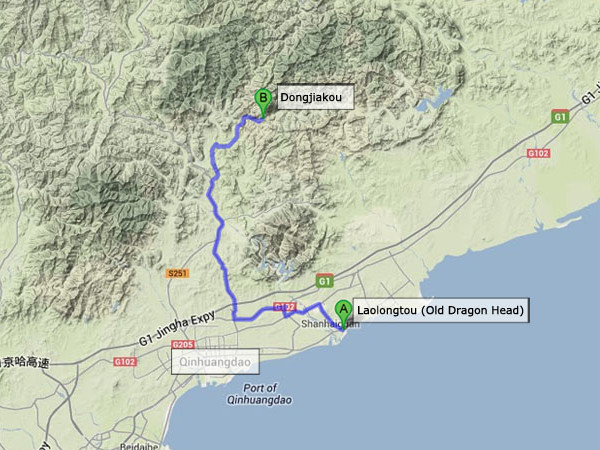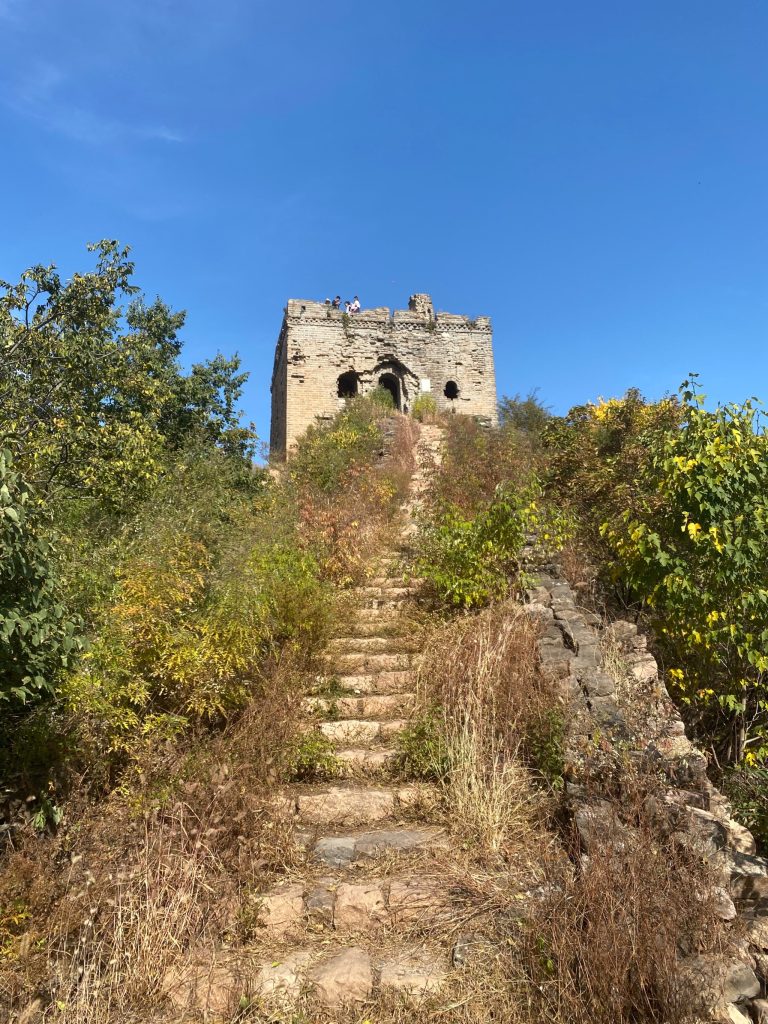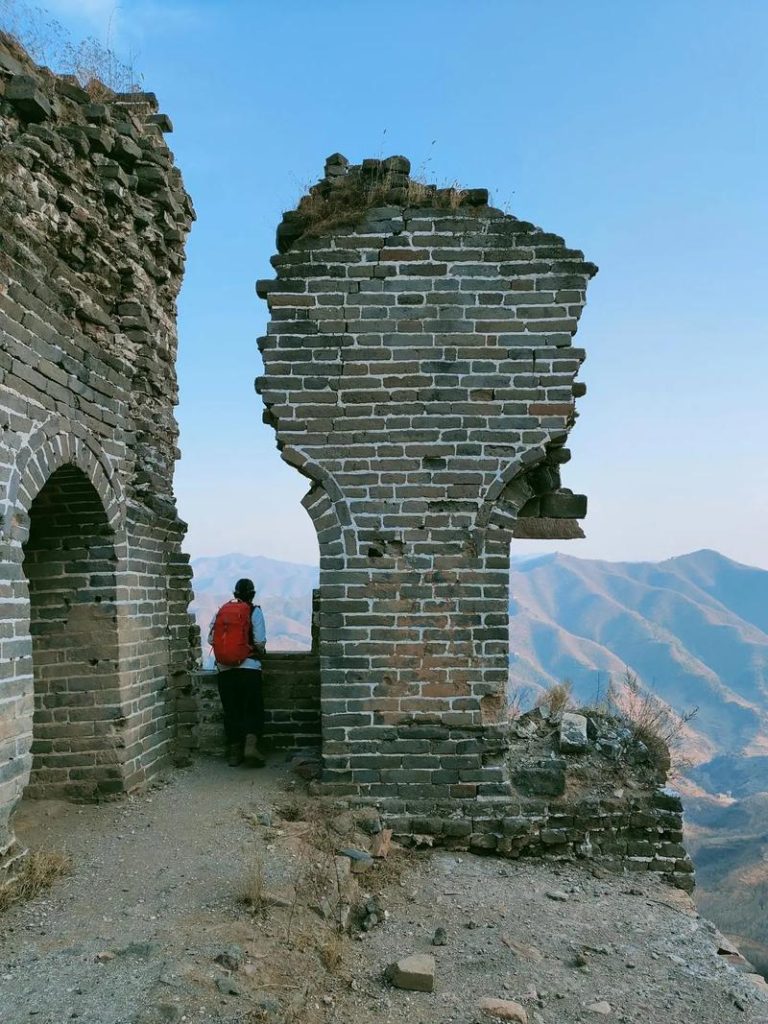Dongjiakou Great Wall – An Untouched Gem of Hebei
Tucked away in Funing District, Qinhuangdao, Hebei Province, the Dongjiakou Great Wall stands out among China’s many Great Wall sections for its raw, unspoiled beauty. Unlike the well-restored Badaling or Mutianyu, Dongjiakou retains much of its original Ming Dynasty (1368–1644) charm—with weathered brick walls, overgrown watchtowers, and panoramic views of rolling mountains. For hikers seeking an authentic, less crowded Great Wall experience, this 8-kilometer (5-mile) route is a hidden treasure. Below is a complete guide to planning your hike, from route details to practical preparation.

Why Hike Dongjiakou Great Wall?
Dongjiakou’s appeal lies in its “wild” character. Built in 1573 during the Wanli era of the Ming Dynasty, it was once a key defense post against Mongol raids, featuring 24 watchtowers, 3 water passes, and a unique “star-shaped” fortress design. Today, most of the wall remains unrenovated: some sections are steep and covered in grass, while others have crumbling bricks that tell stories of centuries of wind and rain. Unlike crowded tourist spots, you might only meet a handful of fellow hikers here—making it perfect for those who want to connect with history in peace.
Another highlight is the scenery: the wall winds through dense pine forests and past rocky outcrops, with views of the Bohai Sea glistening in the distance on clear days. In spring (April–May), wildflowers bloom along the wall; in autumn (September–October), the mountains turn golden and red—both ideal times to hike.
Hiking Route Details: Distance, Difficulty, and Key Stops
The classic Dongjiakou hike is a point-to-point route (not a loop) that takes 4–5 hours to complete, covering approximately 8 kilometers. It’s rated moderate—suitable for hikers with basic fitness, but with some steep sections that require careful footing. Here’s a breakdown of the route:
1. Starting Point: Dongjiakou Village
Begin at Dongjiakou Village, a quiet rural village at the foot of the Great Wall. Before starting, grab a quick breakfast at one of the village’s small restaurants (try “millet porridge” and “fried dough sticks” for ¥10) or stock up on water and snacks (local apples are cheap and juicy in autumn). The village also has a small museum (free entry) with old photos of the Great Wall and Ming Dynasty military relics—worth a 10-minute visit to learn about the wall’s history.
From the village, a 15-minute uphill walk on a dirt path leads to the first section of the wall.
2. Section 1: Lower Wall (Easy, 2 km)
The first 2 kilometers are relatively gentle, with wide brick steps and low slopes. This is a great warm-up: you’ll pass 3 small watchtowers, their interiors still intact (some have stone benches where you can rest). Look for carvings on the bricks—some bear the names of Ming Dynasty brick-makers, a rare detail that adds to the wall’s authenticity.
3. Section 2: Middle Wall (Moderate, 3 km)
The next 3 kilometers get steeper, with sections where the wall climbs at a 45-degree angle. Here, the wall becomes more “wild”: some steps are broken, and you’ll need to hold onto grass or low branches for balance. The highlight of this section is Watchtower No. 12 (locally called “Black Tiger Tower”), the tallest watchtower in Dongjiakou. Climb to its top (4 floors) for sweeping views of the mountains and the village below. On clear days, you can even see the outline of Qinhuangdao’s coastal areas in the distance.
4. Section 3: Upper Wall to End Point (Moderate, 3 km)
The final 3 kilometers gradually descend, passing 2 more watchtowers and a small water pass (a stone structure that once controlled water flow into the valley). The end point is Xinglong Mountain Pass, where the wall meets a forest trail. From here, a 20-minute downhill walk leads to a parking lot, where you can arrange a taxi back to Dongjiakou Village (¥50) or Qinhuangdao City (¥150).
What to Bring: Hiking Gear & Supplies
Dongjiakou’s unrenovated terrain means proper gear is essential. Here’s what to pack:
- Shoes: Sturdy hiking boots with good grip (avoid sneakers—wet grass or broken bricks can be slippery).
- Clothing: Lightweight, moisture-wicking layers. In spring/autumn, add a windbreaker (mountain winds can be strong). Avoid cotton—if it gets wet, it stays wet.
- Supplies: 2–3 liters of water (no water sources on the wall), high-energy snacks (nuts, chocolate, energy bars), and a small first-aid kit (band-aids, antiseptic wipes, pain relievers).
- Other Items: A hat, sunscreen (SPF 30+), a portable phone charger (signal is spotty but works near watchtowers), and a small backpack (to carry your gear).

Practical Tips for a Safe Hike
- Best Time to Hike: April–May (wildflowers, mild weather) or September–October (autumn foliage, cool temperatures). Avoid summer (July–August) heat and winter (December–February) ice.
- Guide or No Guide?: The route is mostly well-marked with red paint dots, but if you’re new to wild Great Wall hiking, hire a local guide (¥200 for a group of 4–6) from Dongjiakou Village—they know hidden shortcuts and can share stories about the wall’s history.
- Leave No Trace: Dongjiakou has no trash bins, so bring a trash bag and take all your waste with you. Do not pick wildflowers or damage the wall (climbing on fragile sections is forbidden).
- Transport: From Qinhuangdao City, take Bus 25 to Funing District (1 hour, ¥10), then a taxi to Dongjiakou Village (30 minutes, ¥30). If driving, use navigation to “Dongjiakou Great Wall Scenic Area” (free parking in the village).

Final Thoughts
Hiking Dongjiakou Great Wall is not just a physical activity—it’s a journey through history. Every weathered brick and overgrown watchtower tells a story of Ming Dynasty soldiers, and the quiet beauty of the mountains makes it easy to imagine what life was like here centuries ago. For hikers tired of crowded tourist spots, Dongjiakou offers a rare chance to experience the Great Wall as it has stood for hundreds of years: raw, majestic, and unspoiled. Whether you’re a seasoned hiker or a history lover, this route is sure to leave you with unforgettable memories.